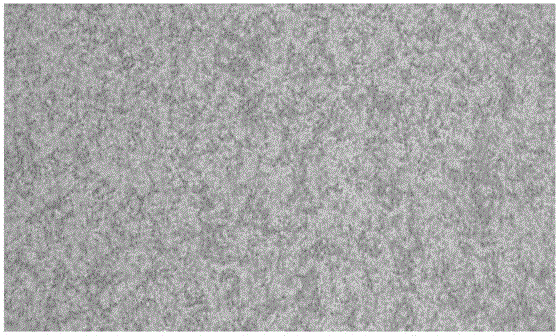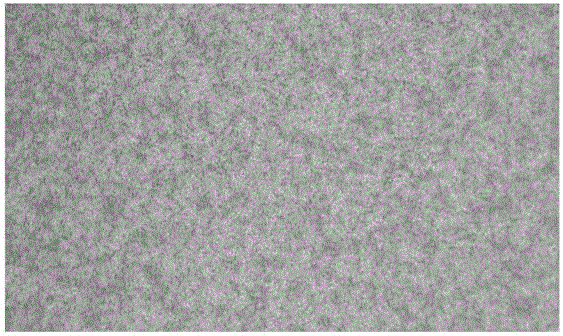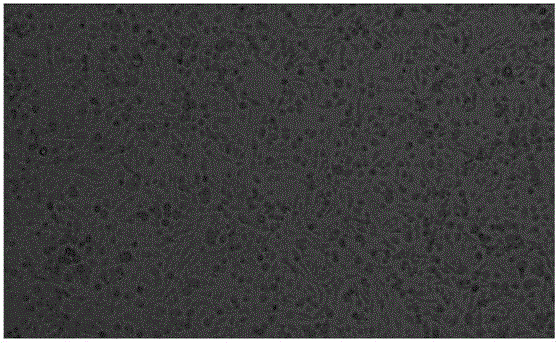Culture medium for culturing human amniotic epithelial cells
A technology of epithelial cells and culture medium, which is applied in the biological field to achieve the effects of simple culture, growth inhibition and growth promotion
- Summary
- Abstract
- Description
- Claims
- Application Information
AI Technical Summary
Benefits of technology
Problems solved by technology
Method used
Image
Examples
Embodiment 1
[0021] Embodiment 1: the preparation of the culture medium of 1000ml human amniotic membrane epithelial cells
[0022] Add 10ml of fetal bovine serum (Hyclone), 0.1100g of sodium pyruvate (sigma), 0.1461g of L-glutamine (sigma), 3.8574g of β-mercaptoethanol (sigma) and 1μg / ml to 890ml DMEM (gbico) medium EGF (PEPROTECH) 100μl, 100mM non-essential amino acid 10ml, the formula of 100mM non-essential amino acid is L-alanine (sigma) 1500mg / L, L-asparagine (sigma) 890mg / L, L-asparagine Amino acid (sigma) 1330mg / L, L-glutamic acid (sigma) 1470mg / L, glycine (sigma) 750mg / L, L-proline (sigma) 1150mg / L and L-serine (sigma) 1050mg / L , after fully mixing, adjust the pH value to 7.2, 0.22μm filter membrane filter sterilization, 4 ℃ storage.
Embodiment 2
[0023] Example 2: Isolation and culture of human amniotic epithelial cells
[0024] First, take a fresh placenta from a cesarean delivery woman who has been approved by the family and has negative serological reactions such as HIV, hepatitis A, hepatitis B, and syphilis. 2 PO 4 , 0.132g of Na 2 HPO 4 .12H 2 O, 8g of NaCl, 0.35g of NaHCO 3 , 1.0g of D-glucose, 0.20g of streptomycin, and 0.12g of penicillin were prepared by distilling the volume to 1L with water and washing with basic balanced salt repeatedly to remove the residual blood on the surface of the placenta; separate the amniotic membrane from the placenta, and Put it into the basic balanced salt solution and rinse repeatedly, and repeat twice; cut the clean amnion tissue into pieces to obtain amniotic tissue pieces with a diameter of 1mm; add 30ml0.2% IV collagenase ( gibco, batch number: 1177238), and incubated at 37°C for 2 hours; then centrifuged the tissue block mixed with collagenase at 200g for 5 minutes, ...
Embodiment 3
[0026] Observation of cell morphology: Most of the primary amnion epithelial cells isolated in Example 2 adhered to the wall after being cultured for 24 hours. The cells that had just adhered to the wall were elliptical and had strong light-shielding properties. Afterwards, the cytoplasm of the cells gradually expanded and the refractive properties weakened. Three days after the cells adhered to the wall, they grew rapidly, proliferated significantly, and the number of cells increased significantly, and the cells entered the exponential growth phase, such as figure 1 . A monolayer was formed in about 5 days, and the cells fused into sheets and grew in a membranous shape. The cells are flat and irregular polygonal, with clear outlines, abundant cytoplasm, and round oval cells, such as figure 2 . After subculture for about 8 hours, the cells adhere to the wall, and a good monolayer can be formed in 3 days, such as image 3 .
PUM
| Property | Measurement | Unit |
|---|---|---|
| Diameter | aaaaa | aaaaa |
Abstract
Description
Claims
Application Information
 Login to View More
Login to View More - R&D
- Intellectual Property
- Life Sciences
- Materials
- Tech Scout
- Unparalleled Data Quality
- Higher Quality Content
- 60% Fewer Hallucinations
Browse by: Latest US Patents, China's latest patents, Technical Efficacy Thesaurus, Application Domain, Technology Topic, Popular Technical Reports.
© 2025 PatSnap. All rights reserved.Legal|Privacy policy|Modern Slavery Act Transparency Statement|Sitemap|About US| Contact US: help@patsnap.com



